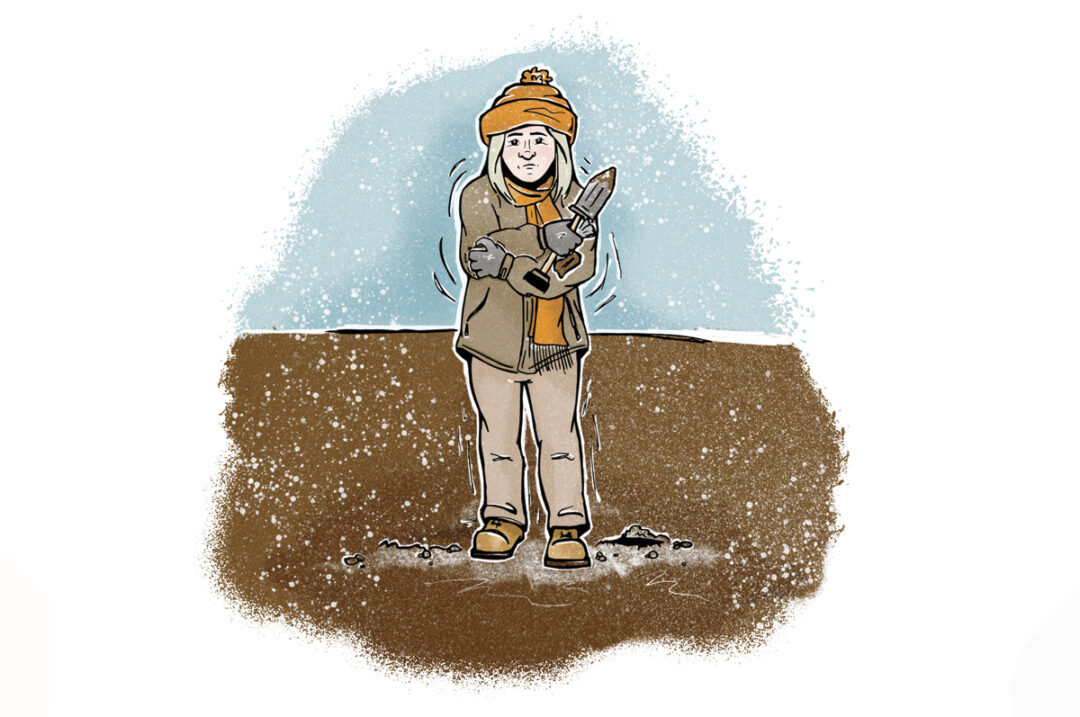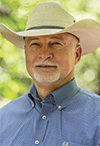The year 2019 is here. Although it is the middle of winter and very little forage is growing, producers still need to be thinking about their forage production and pastures. We should strive to have a plan in place before spring arrives, as management should never rest.
Soil sampling and fertilizer application
Plan now to collect and send off soil samples as soon as you can to prepare for your spring fertilizer needs if you have introduced pastures or cropland that is grazed. To use fertilizer as effectively and cost-efficiently as possible, you need to know what and how much to use to achieve production goals.
If you go to the effort to take soil samples, do it correctly:
- Take 15 to 20 6-inch cores per sample, with the cores being representative of the pasture or field to be fertilized.
- Discard outlier cores or cores that are different from the majority of the pasture.
- If there are two different soil types or textures within the same pasture, and the delineation is easily distinguishable, take two separate samples for the pasture.
- If pastures or fields are large – more than about 40 acres – collecting multiple samples is recommended.
Be sure to accurately complete the forms, giving the soil samples names meaningful to you as the producer, and match the sample names on soil bags and forms. For a matter of record, keep a copy of each form submitted. If you submit soil samples during the winter, the soil analyses will be returned with ample time for you to plan and prioritize actual applications.
As an economic note, oftentimes, fertilizers are priced more advantageously during the winter – because of low demand – than in springtime. Because phosphorus and potassium are not usually subject to the same environmental losses as nitrogen, winter application of these two nutrients, if much is needed, is often very cost-effective.
Prioritize the most productive soils and pastures for management, whether it be for fertilizer recommendations, herbicide applications or cross-fencing. Most producers know from experience which pastures are most productive, but they may not know why.
Locate your property on the Web Soil Survey to determine your soil types and vegetative productivity potentials for range, irrigated crops and nonirrigated crops. For grazing crops, productivity for the different forages is listed in animal unit months (AUM; equivalent to 780 pounds of production). For native range, production is listed in pounds of annual production per year for normal, favorable and unfavorable conditions.
A unique attribute of the Web Soil Survey is color-coding to indicate productivity classes, which makes for quick visualization of the most productive areas of your property or pastures. If your experience and personal observations coincide with the Web Soil Survey information for the forages and soils you are managing, you can target the areas that should receive the first management inputs.
Stocking rate
Make plans now to assess stocking rate. You should be able to answer some of these key questions that provide anecdotal evidence about whether your stocking rate is greater than it should be considering the historical management:
1. How much residual do I have in my perennial pastures when spring begins? When the leaf area of the perennial plants is removed at the end of the grazing season, residual height has been achieved. Introduced pastures should have at least 3 to 4 inches of residual at the end of the grazing season. Native range in tallgrass country should have residuals of 6 to 8 inches, midgrasses should be 4 to 6 inches, and shortgrasses between 2 and 4 inches.
2. What is my percent ground cover? Ideally, soils should never be exposed in perennial pastures. In high-rainfall areas, perennial plants should completely cover the soils; very little bare ground should ever be exposed. In temperate climates, soils should remain covered year-round with either plants or litter. In truly arid environments, bare ground may be expected but should be managed to attain as much litter and plant cover as possible.
3. What is the body condition score of cows at calving and weaning? Forage availability directly impacts body condition of cattle. Properly managed cows should not experience body condition scores less than 5 or 5.5 for extended periods (months) during any given year.
4. Is the conception rate of my cows at or above the industry or regional average? If cows have adequate forage throughout the seasons, conception rate (percent cows bred compared to total cows exposed) should be consistently at or above average, assuming no health issues.
5. Are most of my calves born in the early month(s) of the calving season? If properly stocked, adequate forage is present throughout year, and with good health and nutritional management, most calves should be born early in the calving season. This principle should hold true even without a defined calving season if forage is properly stocked, resulting in 70 to 80 percent of calves born within about a two-month window.
6. How many months did I feed hay or force the cows to “hustle” during my planned winter feeding season? For every month overplanned, one is overstocked by at least 8.3 percent (which equals 1/12). Oftentimes, producers fail to calculate the actual time frame in which substitute feeding occurred or should have occurred (if cows are made to hustle). Make a habit of noting on your management calendar when hay feeding begins and ends, and/or when the end-of-year residual height is achieved, and when grazing begins in full in the spring.
If very many answers to these questions have negative connotations, consider elevating management, reducing stocking rate or both.
Last, develop the management plan for the year ahead along with a calendar of action events. Knowing what you want to accomplish and assigning a time frame in which to complete desired tasks are the first steps to having a plan to work from.
Remember: Timeliness is as critical as the activity itself. Therefore, plan to execute activities early in the ideal time window. You can alter the plan as the time frame looms closer, making adjustments as weather or other factors dictate. The key is to have a plan that identifies the optimum time frame and to execute the task or activity as early as possible.
Now is the time to begin planning for the growing season ahead.









